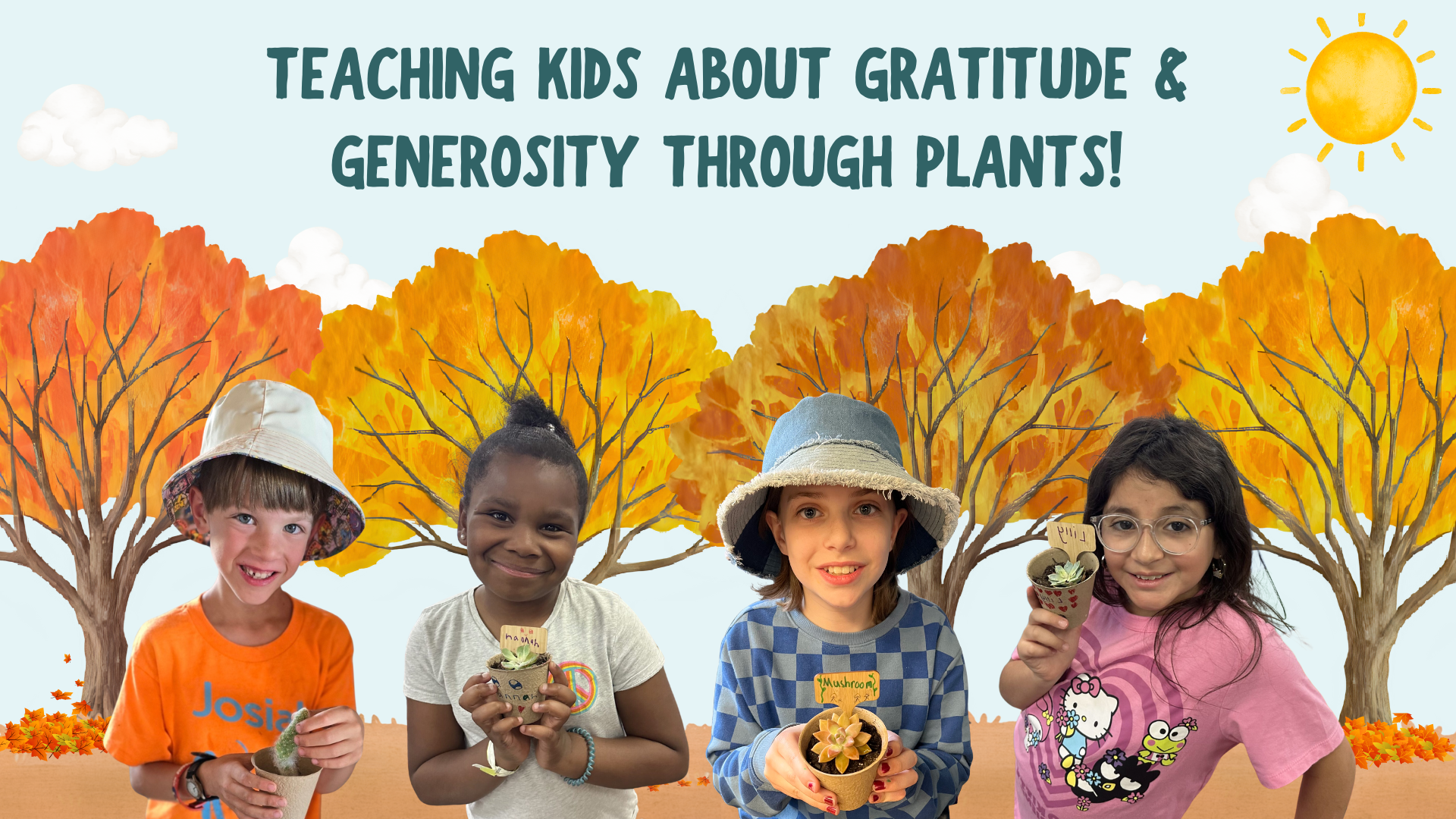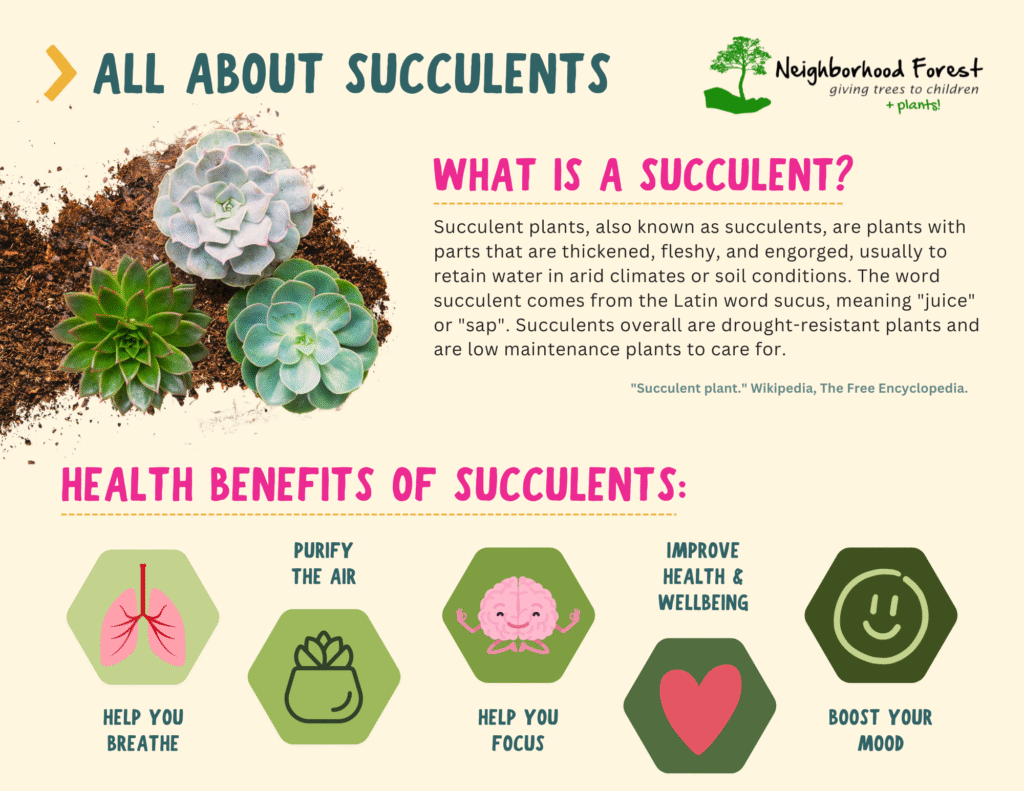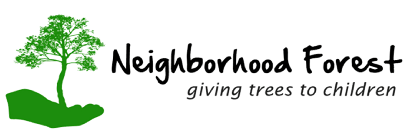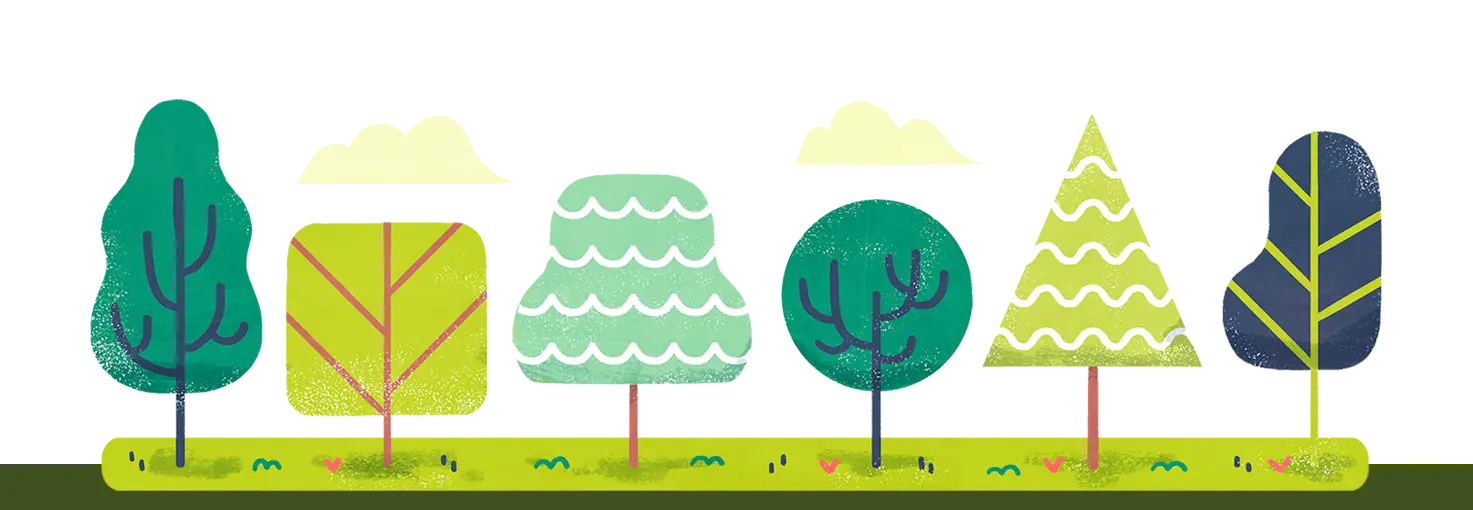
The Spirit of Thanksgiving
Thanksgiving has always been about gathering with loved ones and giving thanks — not only in words, but through action. The holiday celebrates abundance, not just in what we receive, but in what we share. More and more families are seeking creative ways to honor this spirit, whether through volunteering, exchanging homemade gifts, or finding small ways to reconnect with nature.
One simple yet powerful way to embody the spirit of the holiday is by giving kids the gift of indoor plants. Giving plants to children is a beautiful, hands-on way to nurture gratitude and generosity this Thanksgiving.
At Neighborhood Forest, we love teaching kids how generosity flows in a cycle:
We give a free plant → children give their plant their time, love and care → and the plants give back through beauty, oxygen, and joy.
Plants are living reminders of the blessings we enjoy and the responsibility we carry to give back — to each other and to the Earth. As children nurture their plants, they experience firsthand how abundance grows when it’s shared. Gratitude becomes more than a feeling; it becomes a practice that takes root and flourishes over time.
Our Indoor Plant Program
At Neighborhood Forest, we believe gratitude can be cultivated when it’s nurtured through a connection with nature. We want to give every child the joy of planting and watching trees grow. Not all children have access to a yard or space to plant a tree. That’s why we launched our Indoor Plant Program, designed to give children the joy of taking care of a little piece of nature inside their home.
This November, just before Thanksgiving, we will host our 2nd Annual Fall Indoor Plant Giveaway at more than 100 schools, libraries, and youth groups across the country. We will reach over 10,000 children this year — five times more than last year’s 2,000 participants. Each child will receive an indoor succulent plant that is simple to care for, durable, and fun to grow.
The program goes beyond gifting plants:
-
- Hands-On Gratitude: Children learn that growing and caring for a plant is an act of patience, responsibility, and appreciation.
- Accessible Growing: Even families without outdoor space can participate in the joy of nurturing life by growing plants indoors.
- Meaningful Thanksgiving Gift Ideas: Plants serve as lasting reminders of abundance, generosity, and the spirit of giving thanks.
Our program give kids a sense of connection to a greater story — one where caring for plants leads to caring for each other and the environment.
Why Succulents Make Wonderful Gifts
Succulents are small but mighty — perfectly embodying the spirit of abundance and Thanksgiving. They offer incredible benefits:
- They help you breathe better! During photosynthesis, plants produce oxygen, but most respire at night, releasing carbon dioxide. Succulents, however, continue to produce oxygen at night, making them great for bedrooms to boost oxygen while you sleep!
- They clean the air! Succulents take in yucky stuff (volatile organic compounds) from the air and turn it into food, making your room air fresh and clean!
- They help you focus & remember better:Having succulents around can help you concentrate and improve your memory! A University of Michigan study found that memory retention improved as much as 20% when plants were present.
- They make you feel better: Succulents can help you feel less stressed, happier, and even help with headaches and coughs. Research shows that people who have plants in their room feel less tired and use less medicine to feel better.
- They boost your mood!: Succulents can help you relax and feel more calm. Taking care of your succulents can bring you joy and make you feel proud!
Plants and trees offer many additional benefits, making them lasting gifts that keep giving well beyond Thanksgiving.

Teaching kids about Gratitude and Generosity Through Growing Plants
By gifting children plants, families encourage them to see gratitude as an active practice. Caring for plants helps kids develop:
-
- Patience: Plants grow slowly, teaching children to appreciate gradual progress.
- Mindfulness: Caring for plants fosters calm focus and encourages kids to slow down and observe.
- Responsibility: Regular watering and care routines give kids a sense of ownership and accountability.
- Creativity: Decorating their pot and bamboo label and giving their succulent a name inspire artistic expression and creativity through growing plants.
- Connection: Kids learn that living things thrive when nurtured, reinforcing gratitude for relationships in their own lives.
As children grow plants indoors, they also develop an appreciation for nature and its role in sustaining us. Programs such as the mini food forest initiative take this lesson further by showing kids how small-scale planting can support communities.
FAQs
-
- What is a succulent? A succulent is a plant that stores water in its fleshy leaves, stems, and/or roots, allowing it to survive in arid environments where water is scarce. They are known for being drought-tolerant and are often low-maintenance, thriving on neglect and requiring well-draining soil.
- Are Succulents toxic to pets? Some succulents are toxic to pets so it’s best to keep them out of reach.
- What kind of succulents do you give to children? We partner with family-run nurseries that grow hundreds of varieties. Using the Google app, you can snap a photo to identify your plant. Common varieties include Echeveria, Christmas Cactus, and Crown of Thorns.
- How much water should I give it? In general, succulents are very drought tolerant. We recommend watering when the soil is dry, or about 1-2 times a week. Be sure to water the soil itself, not the leafy part of the succulents.
About Neighborhood Forest
Neighborhood Forest is a nonprofit organization dedicated to giving every child the joy of planting and watching a tree grow. Since 2010, we’ve partnered with schools, libraries, and youth groups to distribute free trees to children across North America every Earth Day. Our mission is to instill a sense of wonder and responsibility toward the environment in young hearts and minds.
Here are some ways you can get involved:
-
- Sign up your school, library, youth group, or organization to receive free trees.
- Donate to support our mission and help us reach more children.
- Learn more about our story and how we’re inspiring future generations.








